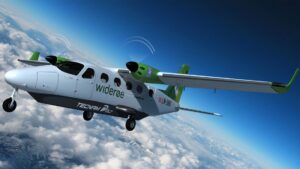Mankind is becoming more aware every year that burning fossil fuels for transport, heating and industry produces quantities of CO2 which alter the planet’s climatic balance. As a result, considerable efforts are being made to use more non-polluting renewable energies and reduce the use of fossil fuels.
Air transport blamed
Planes are accused of being too polluting. In reality, only 2% of all CO2 emitted by human activities is renewable by air transport. transport in general contributes about half of all human CO2 emissions. So why blame the air transport so much?
Air transport, a scapegoat?
A little bit. This for several reasons: the first in my opinion is that almost everyone has an internal combustion car, so it’s easy to blame the planes, which hardly anyone owns and which we use rarely. The second is that we are hammered by advertisements extolling the ecological character of cars, which often even contain the word “eco” in their name. People end up believing it, whereas even though some progress has been made, cars still pollute a lot, even more so when they exceed a few tens of thousands of kilometers. Obviously, it is different for electric cars.
Why a private jet is more polluting than an airliner
What must be taken into account is the consumption per passenger. For example, a coach consumes on average 31 l of fuel per 100 km, while a car consumes on average 8 l of fuel for the same distance, if we want to stick to real data, because manufacturers always report well lower consumption. In reality, the conditions of use, and especially the early wear and tear of internal combustion engines result in much higher consumption than those declared by the manufacturers. So we can consider that a coach consumes roughly four times more than a car, but it normally carries, on average, 20 times more passengers than a car. The fuel consumption of a coach per passenger is therefore five times lower than that of a car.
The same reasoning can be applied to private flights: an airliner even consumes 10 times more than a private jet, but it carries on average 50 times more passengers. Following the example of what happens for the coach and the car, we can calculate that the consumption per passenger is five times lower for airliners, compared to that of private jets.
New technologies can close the gap to the advantage of private planes
Indeed, while it will take many more years to have long-haul planes or even single-aisle aircraft powered by electricity or hydrogen, there are plenty of private electric planes in the development phase. Some will enter service next year, such as the Tecnam electric plane ordered in several copies by a Norwegian airline, for regional transport.

